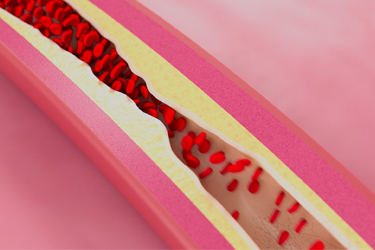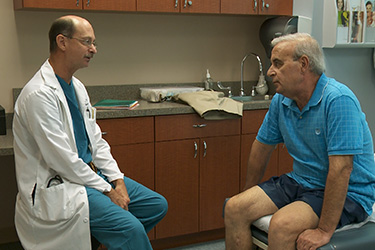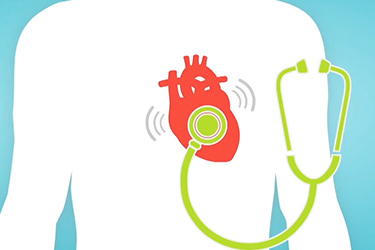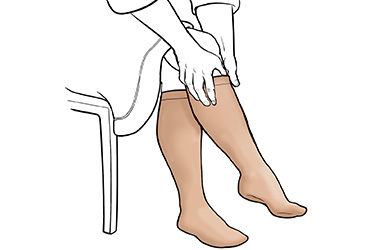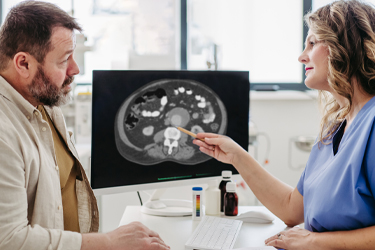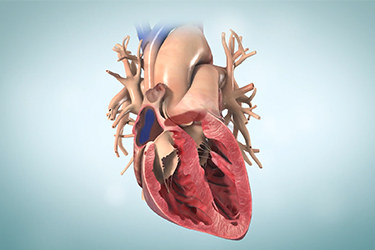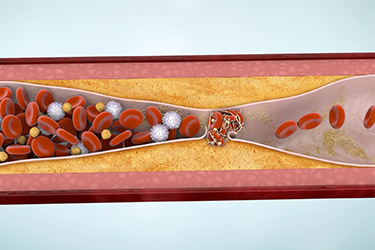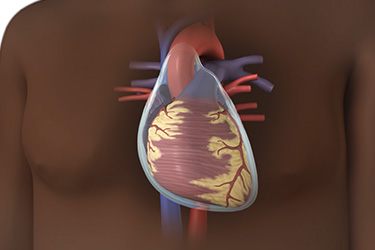Other Cardiovascular Conditions
Angina
Coronary Artery Disease (CAD)
Show more
Common Tests for Coronary Artery Disease
Treating Coronary Artery Disease
Angina and Other Symptoms of Coronary Artery Disease
Heart Disease in Women
Understanding Coronary Artery Disease
Focus On: Blood Clots
Coronary Heart Disease (Coronary Artery Disease)
Coronary Artery Disease - When Are Heart Attacks Most Likely to Occur?
Treating Coronary Artery Disease: Lifestyle Changes, Medications, Stents and Surgery
Understanding Coronary Artery Disease (CAD)
Peripheral Artery Disease (PAD)
Show more
Living with PAD
When to Call the Doctor: Peripheral Artery Disease (PAD)
What is Venous Thromboembolism?
Who is at Risk for Venous Thromboembolism?
What Is Peripheral Artery Disease?
Carotid Artery Disease
Arterial Insufficiency
Leg Artery Emergencies: Critical Limb Ischemia (CLI)
Leg Artery Emergencies: Acute Arterial Occlusion
Peripheral Artery Disease (PAD)
Heart Valve Disease
Show more
Mark Ridder Aortic Stenosis Treatment
Mark Ridder Aortic Stenosis Surgery Recovery
Heart Valve Ambassador: Thelma Hill - Mitral Valve Replacement
Heart Valve Ambassador: Thelma Hill - Be Your Own Advocate
What is Aortic Valve Stenosis?
Recovery Milestones Checklist
What Is Infective Endocarditis?
What is a Heart Murmur and How Does It Relate to Valve Problems
Video in
English
Heart Valves: Symptom Tracker
Understanding a Potential Heart Valve Problem
Understanding the TAVR Procedure
Understanding the TMVR Procedure
Why Do You Need Transcatheter Aortic Valve Replacement?
Why Do You Need Transcatheter Mitral Valve Replacement?
Repair or Replace: Options for Aortic Valve Disease
Preparing for Transcatheter Valve Surgery
Life After Valve Surgery
Liz: A Valve Replacement Patient Story
Understanding Mitral Valve Regurgitation
Mitral Valve Prolapse
VTE & DVT Prevention
Step-by-Step: Putting on Knee-High Compression Stockings
Step-by-Step: Putting on Thigh-High Compression Stockings
Show more
What is Deep Vein Thrombosis?
Deep Vein Thrombosis (DVT)
Preventing DVT in the Hospital
Preventing DVT After Hospital Discharge
Deep Vein Thrombosis - Travel and the Increased Risk of DVT
VTE Signs and Symptoms
VTE Treatment
What is Venouse Thromboelbolism
Text in
English

